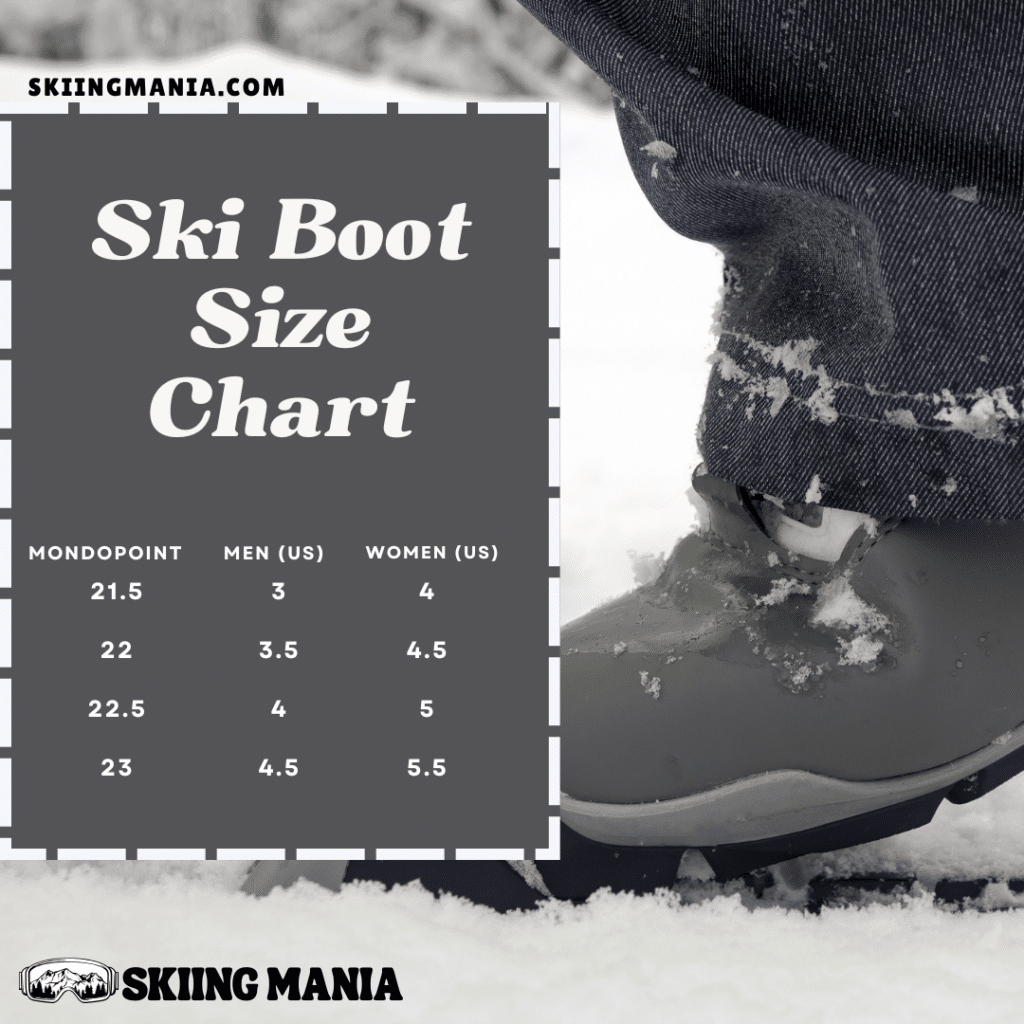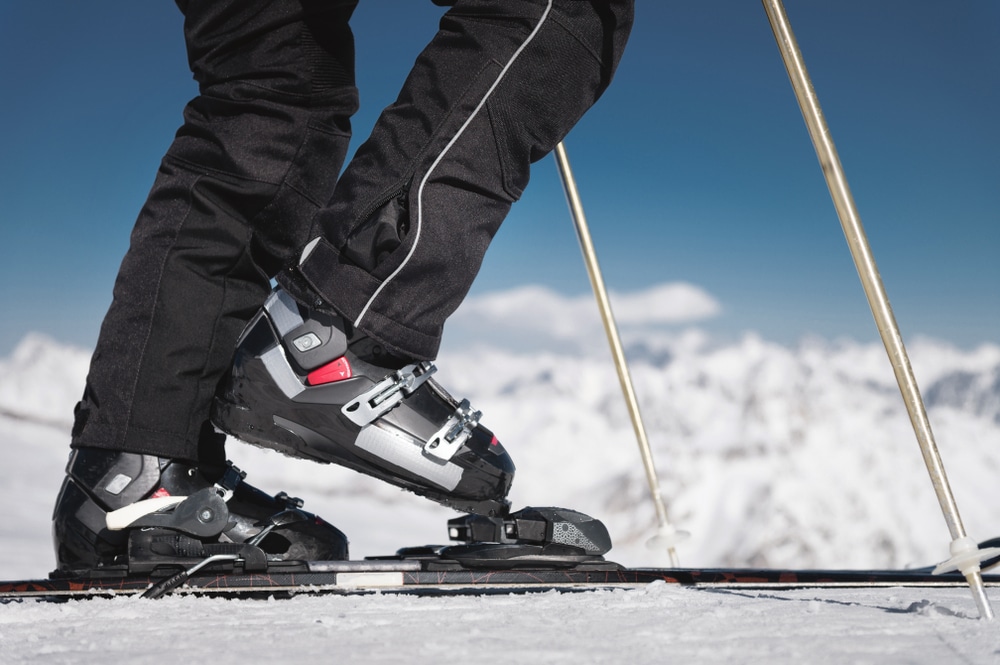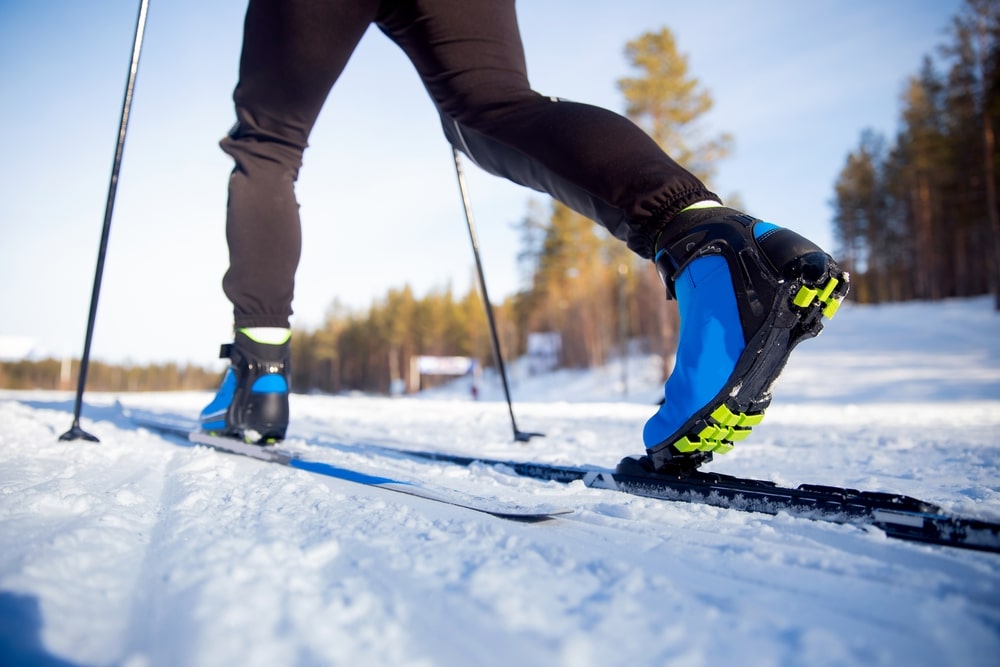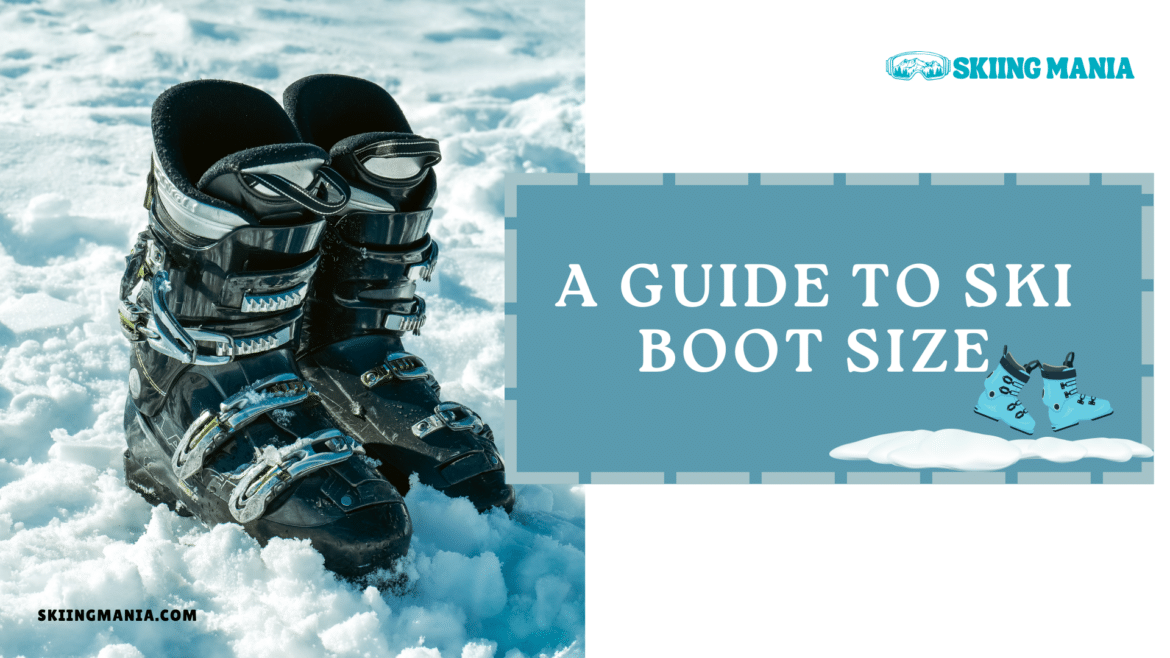Table of Contents
Boots not fitting well with all the snow while skiing? Folks, you must know that a proper equipment is required to show off your perfected telemark skiing or go out for a random skiing adventure. Hence, you must find the perfect ski boot size for this adventure. Now, you must be wondering how you can get the right size for your skiing boots. Well, worry not; we are just the solution to your problem. From ski boot size conversion to your full-size chart, we will help you through everything. So, let’s dive into it.
Sizing Your Ski Boot
Taking off on an adventure in skiing? Make sure your ski boots fit perfectly as your first step. They are your pass to comfort and control on the slopes; they are more than just shoes. Imagine yourself fighting your gear instead of creating those seamless turns because of the incorrect size or flex. But do not worry. Reaching the state of ski boot happiness is feasible.
- A vital first step is to size them correctly.
- Explore mondo sizing, conversion charts for ski boot sizes, and exact measurements.
- Next, precisely adjust the fit by shaping the liners to create a customized fit.
- And don’t undervalue the significance of a skilled boot fitter, your hidden asset, when searching for the ideal pair.
- Every foot type has a match, from women’s ski boot size chart guidelines to children’s ski boot size charts.
- It’s about creating a smooth transition between your body and your skis, not just about putting on some boots.
You can conquer the mountains when your boots fit properly, so lace up your ski socks, put on your performance ski boots, and confidently head out onto the powder.

How to Measure Ski Boot Size?
A question that might arise here in your head is how to determine a ski boot size chart.
- Foot Length: Also known as mondo point sizing, measure the length of your feet in centimeters. This dimension is essential for choosing the right ski boot size.
- Arch Length: Measure your arch’s length, paying special attention to how it alters when you sit and stand. A skilled boot fitter will evaluate this to guarantee appropriate fit and support.
- Foot Width: Measure the width of your foot, commonly represented by these letters A, B, C, D, or DD. This information helps you choose the appropriate ski boot width.
- Instep Height: To measure your Instep height, measure from one heel corner to the other, going across the upper portion of your foot. This measurement will help you choose the right volume for your ski boot.
- Foot Form: Consider your foot’s general form and any unique traits or features that might impact how well the ski boot fits.
- Aggression: Evaluate your skiing style and degree of aggression on the mountain. This may affect which kind of ski boot and fit best meets your requirements.
A LIGHTBULB! 💡 When determining your ski boot size, consult sizing charts and pay attention to mondo sizes, which indicate foot length in centimeters. Always make sure you have the perfect fit by trying on ski boots, taking into account the shell and lining for maximum comfort and functionality.
The Mondo Size
Now, what exactly is a mondo size in skiing sport?
- The Mondopoint sizing system, which measures the length of the foot in centimeters, is commonly used in ski boot sizing charts.
- These charts offer conversions between Mondopoint and conventional shoe sizes, distinguishing between Comfort Fit and Performance Fit choices.
- The roomier Comfort Fit is ideal for beginners or seldom skiers, while the Performance Fit is best for intermediate to pro skiers looking for control and precision.
- Skiers with more experience could choose even smaller sizes for a tighter fit, although this could be uncomfortable and call for the services of a boot fitter.
The charts also consider the importance of a precise fit for maximum slope performance, shell and liner fit, and ski sock thickness.

Selecting the Perfect Boot Size
Making the proper boot choice for skiing is essential for comfort and control on the slopes.
- Ski Boot Size and Conversion: Measuring the length, width, and instep to determine your size. Keep in mind that sizes can differ between manufacturers.
- Flex or Stiffness: Pick a flex that balances control and comfort. When flexing, aim for a position where your knee travels forward roughly 5 inches.
- Personalized Fitting Boot: For an exact fit, see a certified boot fitter. Heated liners and custom insoles guarantee the best comfort and support.
- Shaft Alignment: Take care of any bow-legged or knock-kneed alignment for optimal ski edge engagement.
- Boot Sizing Charts and Mondo Sizes: See sizing charts and mondo sizes for precise measurements and conversions.
- Kids Ski Boot Size Chart mm: Use this specific size chart to ensure your kids’ ski boots are sized to fit properly.
- Ski Socks: Wear the proper ski socks for optimal fit and comfort.
- Good fit: A pair of ski boots should fit each foot snugly to preserve stability and control.
- Performance Ski Boot: Select boots based on your skiing style and skill level for best results.
- You can have responsive and comfy boots for skiing if you follow these instructions and see a boot fitter.

Final Thoughts
As we wrap up, finding the ideal ski boot size guide is essential for a fun and safe experience on the mountain slopes in the thrilling sport of skiing. The ideal fit guarantees maximum performance and comfort for all ages.
In conclusion, you may confidently embark on your skiing excursions if you know how to measure and interpret ski boot sizes. Your gear will support you through every turn and jump, and your feet will appreciate you making an effort to ensure your ski boot fit is perfect before hitting the slopes.
SLIDE UP THE HILL!


1 comment
[…] you’re selecting the perfect ski pole size or the best ski boot size for yourself, your ski adventures shouldn’t miss a thing. If you’re considering what size ski […]